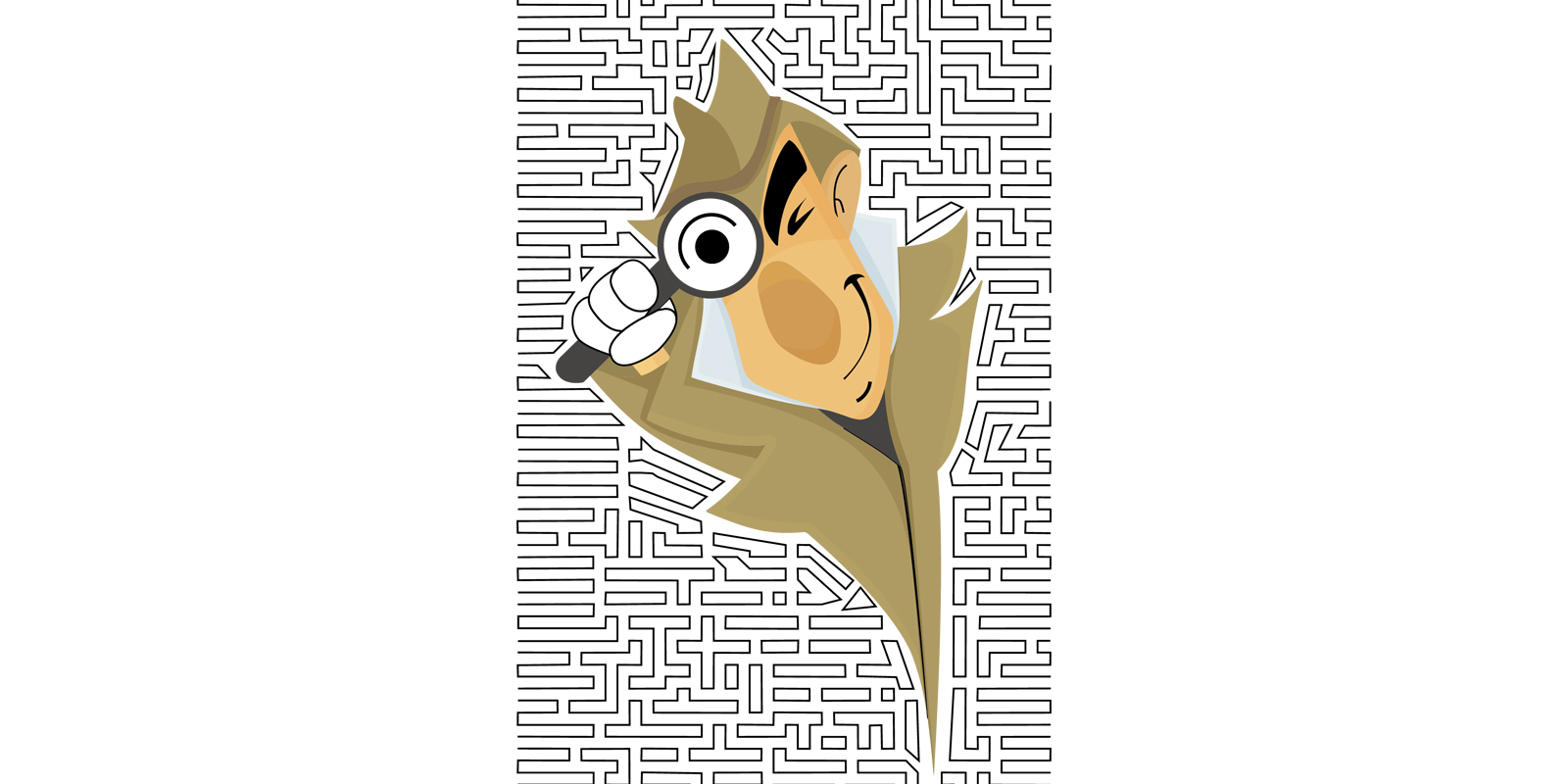
Test your knowledge of founding authors, popular characters, narrative elements and more with this matching game.
Identify the description on the right that matches a term on the left, then check your answers at the bottom of the page!
| Term | Description |
|---|---|
| 1. Hook 2. Crime 3. Sleuth 4. Evidence 5. Foreshadowing 6. Red Herrings 7. Agatha Christie 8. Arthur Conan Doyle 9. Karen McManus 10. Nancy Drew 11. Hardy Boys 12. Motive 13. Butler 14. Old Lady 15. Clue® 16. Knives Out 17. Victim 18. Poison 19. Noir 20. Cozy 21. Hunch 22. Forensics 23. Alibi 24. Witness 25. Mystery |
A. Someone who sees a crime and reports what happened. B. The poor, unfortunate person who is the reason for an investigation. C. The character who follows the evidence to solve the mystery. D. False clues that throw a reader and/or the sleuth off the right track. E. An often-used weapon that is difficult to trace. F. Usually an amateur sleuth who is better at solving crimes than the police. G. Dark, stylish, Hollywood-style crime dramas. H. The titular teenage girl sleuth solving mysteries in the series that debuted in 1930. I. Something that baffles understanding and cannot be explained. J. Reason the crime was committed. K. A 2019 movie with Chris Evans in a great sweater. Oh, and a murder mystery. L. Author of popular teen mysteries, including Two Can Keep a Secret. M. An feeling that something might be the case. N. What gets a reader interested in the story and in “solving” the mystery themselves. O. Brother sleuths from a series debuting in 1927. P. Hints in the text to lead a reader to solve the mystery on their own. Q. The use of scientific techniques in criminal investigations. R. Clues as to what happened. S. The event that causes the mystery. T. Genre of mysteries with limited action and an amateur sleuth who lives in a small town or close-knit community. U. A popular board game that was made into a movie in 1985. V. A classic suspect. W. Creator of the most famous sleuth, Sherlock Holmes. X. Proof that someone accused of a crime could not have done it. Y. Author of 66 detective novels and 14 short story collections, including And Then There Were None. |
Answers
1. N, 2. S, 3. C, 4. R, 5. P, 6. D, 7. Y, 8. W, 9. L, 10. H, 11. O, 12. J, 13. V, 14. F, 15. U, 16. K, 17. B, 18. E, 19. G, 20. T, 21. M, 22. Q, 23. X, 24. A, 25. I

